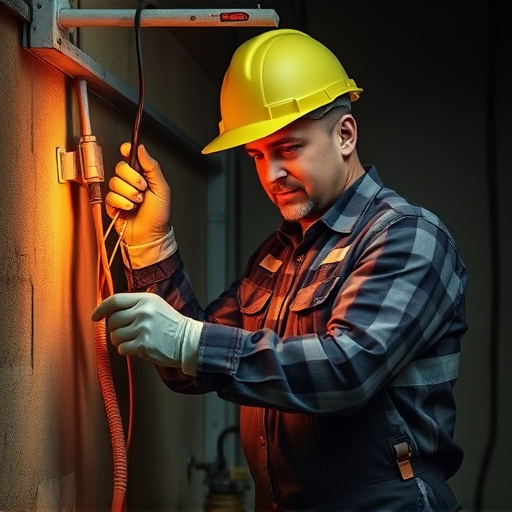Heat dissipation is vital for system reliability and performance across various industries, from automotive to electronics. Stainless steel cold air intakes (SACAI) excel in this regard due to their high thermal conductivity and exceptional corrosion resistance. SACAI reduce engine temperatures, enhance efficiency, and ensure structural integrity in challenging environments like coastal areas. Their durable design improves engine longevity, fuel efficiency, and power output while withstanding humidity and extreme temperatures, making them an ideal upgrade for peak automotive performance and reduced breakdown risk.
Heat dissipation is a critical aspect of automotive performance, ensuring engines run optimally. This article explores the fundamentals of effective heat transfer and its impact on vehicle efficiency. We delve into the role of stainless steel cold air intakes as a corrosion-resistant solution, enhancing both performance and durability. By understanding these principles, car enthusiasts can make informed choices to optimize their vehicles’ cooling systems and overall health.
- Understanding Heat Dissipation: The Basics
- Stainless Steel Cold Air Intakes: A Corrosion-Resistant Solution
- Enhancing Performance and Durability with Corrosion Resistance
Understanding Heat Dissipation: The Basics

Heat dissipation is a critical process that ensures the efficient and reliable operation of various systems, from automotive engines to electronic devices. Understanding how heat dissipates is fundamental in designing components that can withstand high-temperature environments. The primary goal is to reduce the temperature of a system or component by transferring thermal energy away from it. One effective method is through the use of materials with excellent thermal conductivity, such as stainless steel, which plays a vital role in enhancing heat dissipation capabilities.
Stainless steel cold air intakes, for instance, are popular choices due to their corrosion-resistant nature. These intakes allow for the direct intake of cool external air, facilitating an efficient heat exchange process. The corrosion resistance ensures that the component can maintain its structural integrity over time, even in harsh environments where traditional materials might falter. This basic understanding highlights the significance of material selection and design innovations in optimizing heat dissipation, ultimately contributing to improved system performance and longevity.
Stainless Steel Cold Air Intakes: A Corrosion-Resistant Solution

Stainless Steel Cold Air Intakes offer a powerful and durable solution for enhancing heat dissipation in various applications. Crafted from high-quality stainless steel, these intakes boast exceptional corrosion resistance, ensuring longevity even in challenging environmental conditions. This robust material withstands the effects of humidity, salt water, and extreme temperatures, making it ideal for use in coastal regions or harsh industrial settings.
By directing cold air directly into the engine’s combustion chamber, stainless steel cold air intakes facilitate a more efficient burning process, reducing internal temperatures. This design minimizes the risk of heat-related damage to components, enhancing the overall performance and reliability of the system. The corrosion resistance further reinforces the intake’s ability to maintain optimal airflow, contributing to improved fuel efficiency and engine power.
Enhancing Performance and Durability with Corrosion Resistance

In the pursuit of optimal engine performance, heat dissipation plays a pivotal role. Incorporating corrosion-resistant materials, such as stainless steel cold air intakes, offers significant advantages. This upgrade not only enhances overall system efficiency but also ensures longevity and reliability in harsh environmental conditions. The resistance to corrosion prevents internal damage caused by moisture, salt, or other corrosive elements, maintaining the integrity of the intake and ensuring consistent airflow—a critical factor for peak engine performance.
Moreover, stainless steel is renowned for its durability, making it an ideal choice for demanding automotive applications. By adopting corrosion-resistant components, vehicle owners can expect improved durability alongside the benefits of enhanced cooling capabilities. This simple upgrade contributes to a smoother driving experience and reduces the risk of unexpected breakdowns, ultimately enhancing both the performance and durability of the engine.
In conclusion, understanding heat dissipation is key to optimizing engine performance and longevity. Stainless steel cold air intakes (CAIs) offer a robust, corrosion-resistant solution, enhancing both the durability and efficiency of your vehicle’s engine cooling system. By choosing CAIs with these properties, you ensure a reliable and long-lasting upgrade that contributes significantly to overall engine health.














